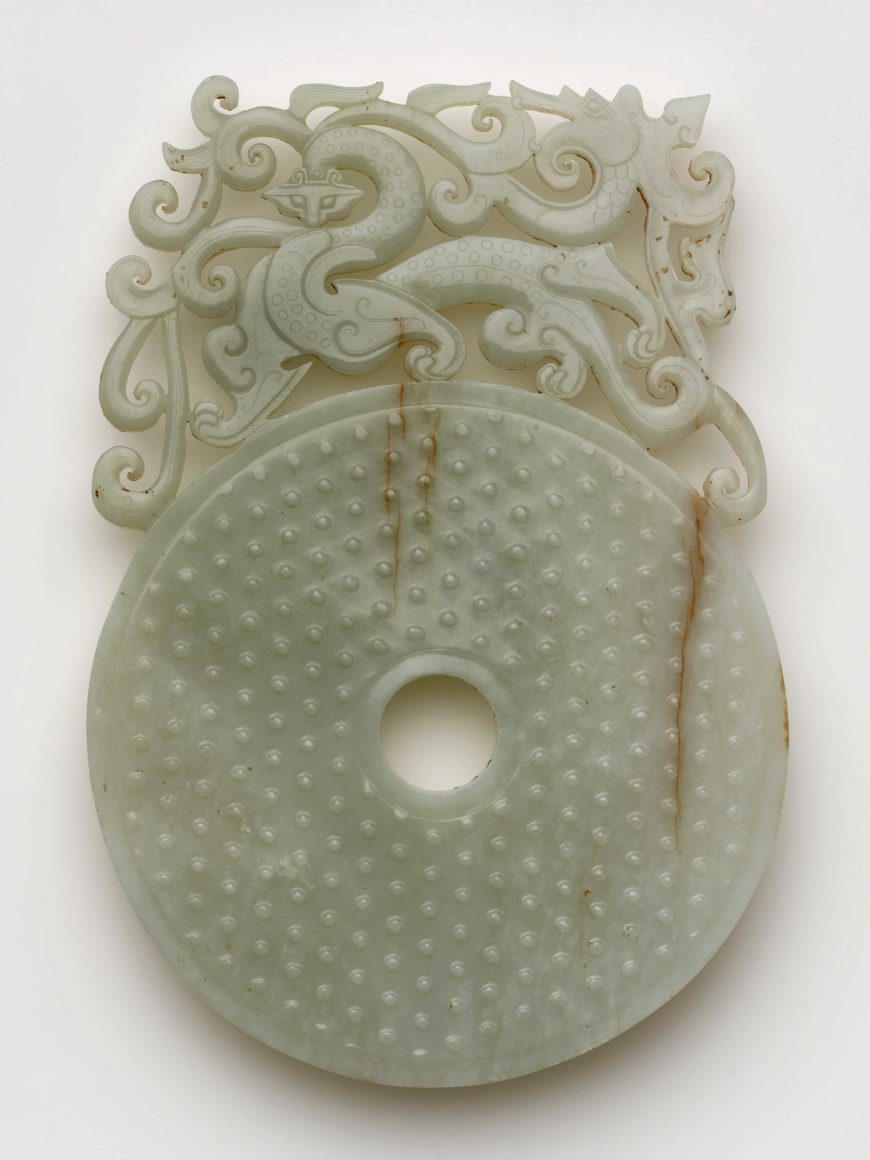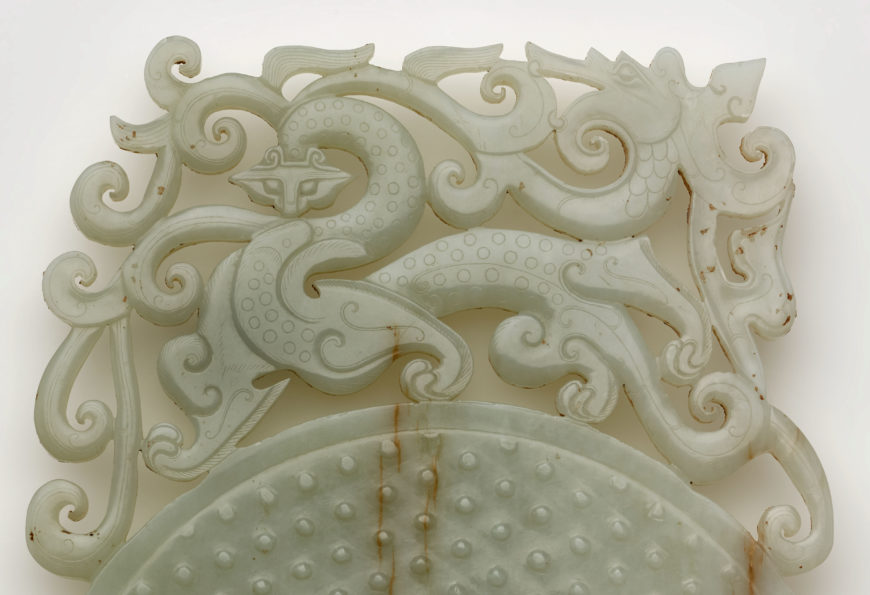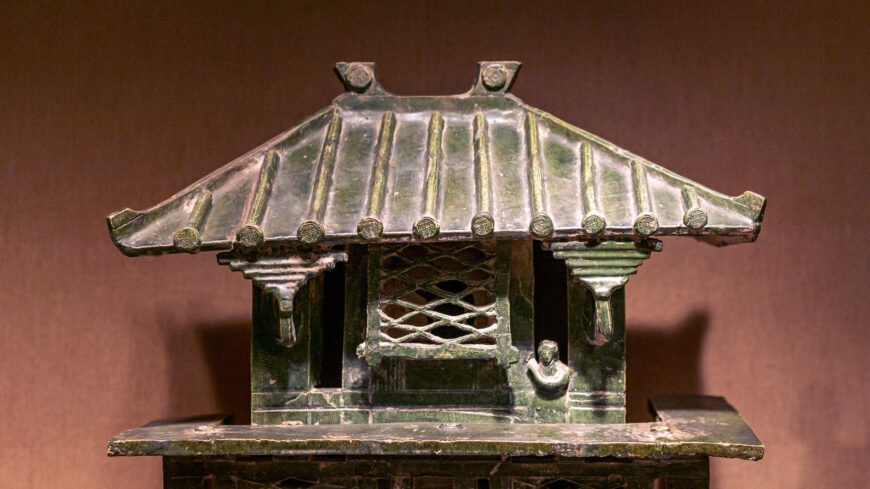
Disk (bi) with knobs, feline, and dragon, Eastern Han dynasty, 100–220, jade (nephrite), China, 22 high x 15.2 x 0.7 cm (Freer Gallery of Art, Smithsonian Institution, Washington, DC: Gift of Charles Lang Freer, F1916.155)
This jade disk, or bi, has a flat, circular body. It has a round hole at the center and a complex, openwork design on top. The jade material is almost translucent and in a pale greenish-white color. Both front and back are carved identically. The circular body is decorated with repeating raised dots, known as “grain pattern.”

Top of the disk (bi) with knobs, feline, and dragon, Eastern Han dynasty, 100–220, jade (nephrite), China, 22 high x 15.2 x 0.7 cm (Freer Gallery of Art, Smithsonian Institution, Washington, DC: Gift of Charles Lang Freer, F1916.155)
Look carefully at the beautiful and elaborate design on the top. Do you see a dragon and a cat-like animal, or feline? The dragon face appears on the top right. Covered with scales, it is immersed in sweeping curves, which is how ancient Chinese artisans depicted clouds. The feline is forward-facing with round dots all over its twisted body.

Top of the disk (bi) with knobs, feline, and dragon, Eastern Han dynasty, 100–220, jade (nephrite), China, 22 high x 15.2 x 0.7 cm (Freer Gallery of Art, Smithsonian Institution, Washington, DC: Gift of Charles Lang Freer, F1916.155)
Beginning in the Neolithic period (c. 7000–1700 B.C.E.), Chinese artisans produced plain perforated disks, or bi. Their origin and purpose is not entirely known. According to early Chinese texts, they are symbols of heaven. During the Han dynasty (206 BCE–220 C.E.), the disks became more elaborate than their Neolithic predecessors. On some luxuriously fashioned examples, like this one, artisans would extend the circular shape of the disk by adding fantastic serpentine creatures. These intricate designs contrast with the simplicity of the disk itself.
Both dragons and felines were considered auspicious symbols in the Han dynasty. Dragons, in particular, were believed to bring good luck and represent peace, courage, and wisdom. They came to be associated with imperial power. This disk, with such a remarkable design and exceptional quality of jade material, is extremely rare. Similar disks have been found only in royal tombs.
This resource was developed for Teaching China with the Smithsonian, made possible by the generous support of the Freeman Foundation





